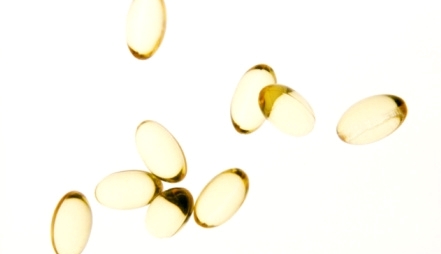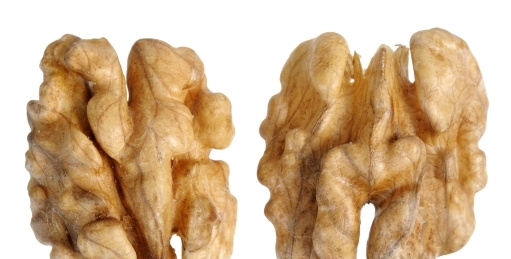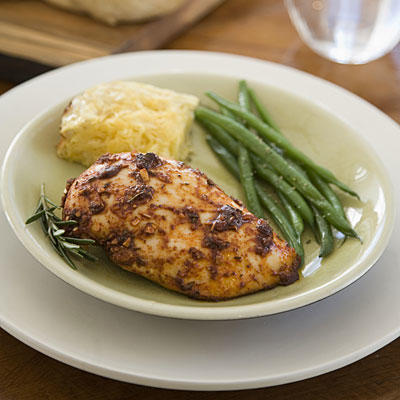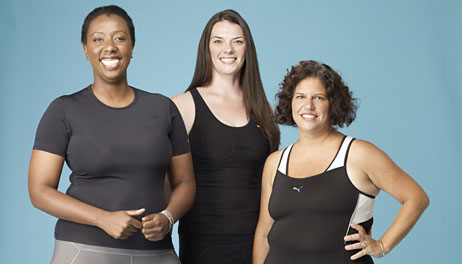Diet Plan Guide: Daily Calorie, Protein, Fat & Carb Intake and Sources
Whether you want to lose weight, build muscle or improve any aspect of your body or health, setting up your entire diet plan correctly is an absolute requirement for reaching any of these types of goals.
The problem is, between your daily calorie, protein, fat and carb intake and the food sources you’re getting these nutrients from, diet and nutrition tends to be the area people screw up the most. In fact, our diet plan is often the area we barely even care about in the first place.
I hear it all the time. People tell me all about their workout routines and what exercises and muscle groups they train on what days and how much weight they lift for how many sets and reps and blah blah blah, but when I ask them about their diet plan, the answer is usually “it’s okay” or “I think it’s pretty good.”
In reality however it’s often terrible, and it’s the #1 reason you’re not losing fat or building muscle or getting the results you want. The truth is, if your diet plan isn’t set up the way it needs to be for your goal to be reached, then your goal WILL NOT be reached. Simple as that.
So, how should you eat to support your goal? How do you figure out what your daily calorie, protein, fat and carb intake needs to be and what food sources those nutrients should and should not come from? How do you set up your ideal diet plan?
Here now is a free guide that contains all of those answers. Let’s begin…
Daily Calorie Intake
Above everything else in your diet plan, your daily calorie intake is by far the most important part of it. As you will see, protein, fat and carbs definitely matter as well, but nothing influences your ability to lose weight, gain weight, build muscle or do anything similar as much as calories do.
This is because everything we eat and drink (besides obvious calorie-free items like water) contains calories, and everything we do (exercise, getting dressed, breathing, digesting food, etc.) burns calories. The difference between how many calories we consume and how many calories we burn is the most important factor in every diet plan. Here’s why…
How do you use calories to control your weight?
The way the human body works is pretty simple. There is a certain number of calories that your body requires every day in order for it to maintain your current weight. We call this your “daily calorie maintenance level.” It’s the amount of calories your body requires each day in order to do EVERYTHING it needs to do.
Now, if your diet plan is made up of more, less or the same amount of calories as your maintenance level, 1 of 3 things will always happen…
- If you eat MORE calories than your maintenance level, you will gain weight. This is a requirement for building muscle.
- If you eat LESS calories than your maintenance level, you will lose weight. This is a requirement for losing fat.
- If you eat the SAME amount of calories as your maintenance level, your weight will stay the same. This is a requirement for maintaining your current weight.
And these are really the most important things you need to know about your daily calorie intake and just creating a proper diet plan in general. These 3 simple facts are what most of the population fail to learn, understand, or just pay attention to, and it’s the #1 reason why their body isn’t doing what they want it to do.
How do you estimate your maintenance level?
The first step in figuring out what your daily calorie intake needs to be is estimating what your maintenance level is. There are quite a few ways to do this, but the easiest is to multiply your current body weight in pounds by 14 and 17. Somewhere between those 2 amounts will usually be your maintenance level.
Women, people who are less active, or people who think they have a slower metabolism should use the lower end of their range. Men, people who are more active, or people who think they have a faster metabolism should use the higher end of their range. People who are unsure should just pick a number in the middle.
Another way to estimate your daily calorie maintenance level is with the calculator below. Just fill it in and click “Calculate!”
How do you adjust your daily calorie intake for your goal?
Now that you have a good estimate of what your maintenance level is, it’s time to adjust it for your specific goal. Here’s how…
- If you want to lose weight, SUBTRACT about 500 calories from your estimated maintenance level and start eating this amount each day.
- If you want to build muscle or gain weight, ADD about 300-500 calories to your estimated maintenance level and start eating this amount each day.
- If you want to maintain your current weight, don’t make any adjustments. Just eat your maintenance level amount each day.
To ensure your daily calorie intake is indeed what it should be, all you need to do is weigh yourself about once per week first thing in the morning before eating or drinking anything, and monitor if your weight is moving in the right direction at the ideal rate.
For losing weight, 1-2lbs lost per week is usually perfect. For gaining weight or building muscle, 0.5-1lb gained per week is usually perfect. So, if that’s happening, you’re perfect. Continue eating this daily calorie intake from that point on.
But if it’s not, then you just need to adjust up or down in small 250 calorie increments until it is. Yup, just that simple.
Now that your daily calorie intake is set up, it’s time to set up the protein, fat and carbs that will supply these calories.
Daily Protein Intake
The next most important part of your diet plan is your daily protein intake. Why? Because as I explain in my article about the high protein diet, protein is the building block of muscle, it plays a huge role in controlling your hunger and keeping you satisfied, and, if weight loss is your goal, it’s the dietary key to ensuring that the weight you lose is fat and not muscle.
These benefits are the reason why protein supplements are so damn popular and you’ll never hear anyone recommend a low protein diet. The question is, what does your daily protein intake need to be to get all of these benefits?
What is your ideal daily protein intake?
My article about finding your ideal amount of protein per day answers this question in detail, but the quick and simple answer is that most people looking to improve their body should usually be eating between 0.8-1.2 grams of protein per pound of body weight, with an even 1 gram of protein per pound being the most common recommendation.
Most people should use their current body weight when doing this calculation (so a 180lb person would eat 180 grams of protein per day), but people who are truly obese should use their goal body weight instead (so a 300lb person trying to get down to 200lbs would eat about 200 grams of protein per day).
What are the best sources of protein?
Some common high quality sources of protein include…
- Chicken
- Turkey
- Fish
- Meat
- Eggs/Egg Whites
- Milk
- Protein Supplements
Daily Fat Intake
After your daily calorie and protein intake, your daily fat intake is the next part of your diet plan that needs to be set up. There are primarily 4 different types of fat (trans, saturated, monounsaturated and polyunsaturated), and each has a significantly different effect on the human body. My article about Good Fats vs Bad Fats explains this in detail.
The short version is that trans fat should be avoided completely, saturated fat should typically be limited to no more than 1/3 of your total daily fat intake, and monounsaturated and polyunsaturated fats should comprise the majority of it.
A definite extra emphasis should be placed on getting enough of a specific polyunsaturated fatty acid… the omega-3. My article about Omega-3 Fish Oil Supplements explains why it’s so important.
What is your ideal daily fat intake?
In most cases, somewhere between 20-30% of your total daily calorie intake should come from fat, with an even 25% often being just right for most people.
So, just figure out what 25% of your total daily calorie intake is, and then divide that amount by 9 (because 1g of fat contains 9 calories) to figure out how many grams you’d need to eat per day. I’ll show you a full example of how to do this in a minute.
What are the best sources of fat?
Some common high quality sources of fat include…
- Fish
- Fish Oil Supplements (highly recommended)
- Nuts
- Olive Oil
- Avocados
Daily Carb Intake
With calories, protein and fat all set up, the last part of your diet that needs to be figured out is your daily carb intake. The reason we left carbs for last is because out of the 3 macronutrients that supply our daily calories (protein, fat and carbs), carbs are the least important.
As my article about how many grams of carbs you should eat per day explains, carbs are extremely useful and a sufficient amount should definitely be eaten. However, protein and fat are the only macronutrients that are truly essential to the human body and MUST be present in our diet plan in order to live and function. Carbs aren’t, although we definitely live and function much better when we eat them.
Here’s why this is important…
What is your ideal daily carb intake?
Simply put, your ideal daily carb intake is whatever is left over to meet your daily calorie intake after your daily protein and fat intakes have been factored in. That might sound confusing, but it’s not.
Remember the daily calorie intake you calculated before? Subtract calories from protein and calories from fat from that amount. Whatever amount of calories are still left over, those calories will come from carbs.
Here’s a step-by-step example…
- Let’s pretend you calculated that you need to eat 2000 calories per day to lose weight or build muscle or whatever your goal is.
- Next let’s pretend you figured out that you need to eat 150 grams of protein per day. Since 1 gram of protein contains 4 calories, that means 600 of this example person’s daily calories will come from protein.
- Next, since 25% of your calories should come from fat, this example person can calculate that 500 of their 2000 daily calories will come from fat (2000 x 0.25 = 500). To figure out how many grams of fat that would be, they’d just divide 500 by 9 (since there’s 9 calories per gram of fat) and get about 55 grams of fat per day.
- So that’s 600 calories from protein plus 500 calories from fat which gives this person 1100 calories accounted for so far (600 + 500 = 1100).
- Now they’d just subtract 1100 from their 2000 total and get 900 left over calories. Since 1 gram of carbs contains 4 calories, this example person can see that they should eat 225 grams of carbs per day (900 divided by 4 = 225).
You’d just repeat this same process using your actual daily calorie, protein, fat and carb intake instead of the example amounts I just used.
What are the best sources of carbs?
Some common high quality sources of carbs include…
- Vegetables
- Fruits
- Oatmeal
- Brown Rice
- Beans
- Potatoes
- Whole Grains
Organizing Your Diet Plan
Now that you know how many calories and grams of protein, fat and carbs to eat per day and which foods they should usually come from, you’re probably wondering how it should all be put together and organized.
You know, like what times should you eat, how many meals should you eat, and how big or small should each meal be? Well, I can explain all of those answers in just 3 simple words: it doesn’t matter.
Everything you’ve heard about a certain type of diet organization being beneficial for losing weight or building muscle is either a lie, a myth, or complete crap. Ignore it all. My articles about why eating 5-6 small meals per day is BS and why eating after 7 pm at night is fine explain why.
So, the real answer to every question you have about how to best put your diet plan together is this…
Eat the right total amount of calories, protein, fat and carbs each day, get them from mostly higher quality sources, eat a proper post workout meal, and then do EVERYTHING else in your diet in whatever way is most enjoyable and convenient for you. Whatever is most likely to cause you to consistently get the important stuff right… that’s what you should do.
Need A Complete Diet That’s Already Proven To Work BEST?
We’ve now calculated your daily calorie, protein, fat and carb intake and set up the most important aspects of your new diet plan. The articles I’ve linked to throughout this guide will help provide a few extra details as well.
Now, it’s possible you may still have questions about creating your ideal diet (or workout) or just need help putting it all together in the way that is going to be PERFECT for you and your exact goal. Well, after 10 years of people asking me for it, I’ve finally created the solution.
It’s called The Ultimate Fat Loss & Muscle Building Guide, and in it I provide every additional answer, detail and fact you will ever need to get the best results as fast as possible. It contains the proven sample diet plans (and workouts) that I’ve used to help countless men and women completely transform their bodies.
-
Vegetable Soup Diet: Boost Your Weight Loss With This AMAZING Recipe!”
By consuming healthy vegetable soup regularly you will be able to
-
How Can Spinach Help You Lose Weight
This healing green plant can reduce your desire for eating sweet a
-
Incredible Exercises In Order To Tighten Up Your Loose Skin And Lose Double Chin
The extra layer of fatty tissue under our chins is most often caus
-
5-day sugar free diet plan
Sugar hides in foods that don’t seem sweet (think bread and pasta), a
-
Week 20: Reasons to celebrate
By Julie This was a stressful work week f
-
The Water Recipe That Literally Flushes Fat From Your Body
“Fat flush water” may be one of the greatest things you will ever
- DON'T MISS
- 6 Ways to Enjoy Cocktails Guilt-Free
- 10 Motivational Weight Loss Quotes
- Weight Loss Diet - Seeing Results Fast
- What is HCG Diet and can it help you lose weight?
- How To Cleanse Pounds Of Toxins Accumulated in Your Colon With Only Two Ingredients
- Flaxseed Drink – The Best Way To Detox Your Body And Lose Weight
- The 10 Most Filling Foods for Diets
- How to Eat Out Without Getting Fat
- Weight Loss Program - Are You On The Right Track?
- This Is How To Get Rid of Bloated Belly In Just 60 Seconds With This Incredible Belly-Fat Burning Recipe!




